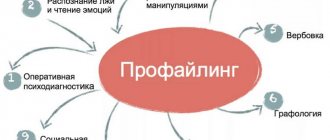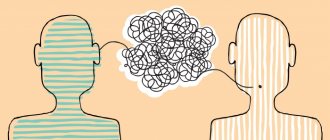So, you felt or realized that you need to CALM DOWN.
quick and simple calming
options (this will prepare you for longer, deeper calming if needed):
|
|
|
Next, choose what suits you in the situation around you:
Step method
Auto-training exercises are learned in stages. In this case, using self-hypnosis, you can change the functions and sensations of the body, which under normal conditions cannot be influenced. It is possible, for example, to influence the pulse rate and the feeling of body heat. The purpose of concentration exercises is to equalize the state of stress, eliminate cramps and spasms and alleviate pain. Auto-training can be used to prevent various types of physical and mental disharmony, since with the help of exercises a positive attitude is achieved, strengthening the state of inner peace and, above all, composure. In addition, it helps improve performance and spiritual concentration (primarily memory efficiency).
Auto-training to calm the nervous system
The technology of autogenic training was the result of numerous observations by I. Schultz of individuals in a state of hypnotic sleep. The foundation of auto-training is the awareness that human mood and the degree of its arousal affect the functioning of all organs. At the same time, Schultz emphasized that such a connection is characterized by reciprocity, since if the desired heart rate and breathing readings are achieved from the individual’s body, then mental processes and mental functions automatically come into balance. The brain rhythms that arise during such work correspond to the state when the subject is between wakefulness and sleep. These rhythms are more optimal for self-hypnosis.
Thus, auto-training for the nervous system is the conscious regulation of one’s own psycho-emotional state. It is carried out through the influence of the individual on himself through words, mental images, control of muscle tone and control of breathing.
Autotraining promotes complete relaxation of muscles, control of excitation mechanisms and inhibition processes of the ganglionic nervous system.
Auto-training for the nervous system requires systematic training, preferably several repetitions per day. Often, it takes about four months to master auto-training; some especially aspiring ones manage to achieve success even in a month.
The advantage of autogenic training is the ease of mastering its techniques. After all, the key techniques can be mastered on your own.
The auto-training system allows you to:
- learn to control - regulate the tone of skeletal muscles;
- evoke the desired emotional mood at will, against the background of muscle relaxation, create a state of mental harmony;
- influence the processes of the nervous system by reviving pleasant sensations in memory;
- regulate attention, focus it on the desired object or distract it.
Auto-training for calming comes down to performing special exercises by an individual in a certain position and immersing himself in a state of relaxation of the body, in which it is easier for him to succumb to self-hypnosis than in a state of wakefulness.
Relaxation should begin with the toes, gradually rising higher to the legs, then the hips and pelvic muscles. After which the muscular corset of the back and abdominal muscles are relaxed, then the muscles of the shoulder girdle and neck, and fingers should be relaxed. During relaxation, you should try to focus your attention as much as possible on the desired muscle group, gradually switching to the next muscle groups. It is also recommended to say the following phrases to yourself:
- I am completely calm;
- excitement leaves me;
- worries leave me;
- I am distracted from everything around me;
— my thoughts slowly flow through me.
In addition, relaxation auto-training can also contain a series of breathing exercises.
You can also use yoga practices to get rid of accumulated stress. Yoga classes can relieve symptoms of increased anxiety and signs of depression.
You can use your own verbal formula aimed at calming. There are also several techniques that help you create calming text material consisting of positive statements. The key point in drawing up a text formula is the prohibition on two things, namely, it is forbidden to self-affirm an ill-conceived verbal formula and to record unnecessarily banal statements on the subconscious, for example, “everything is fine” or something similar.
The verbal statement must be slightly associative and necessarily meaningful. It is necessary to use identical thoughts in the text material.
A well-honed sentence will almost instantly take place in the subconscious.
To mastery through training
Regular training is very important for auto-training. Exercises can be performed lying down or sitting (in the so-called “coachman’s pose”). There are various abbreviated versions and basic exercises, which are only part of the program and the simplest exercises.
The six main steps of such an elementary program are:
- Heaviness
- Calm breathing
- Warm
- Internal body heat
- Calm heart rhythm
- Cold forehead
Before starting the next exercise, you first need to immerse yourself and concentrate on peace. The practitioner says: “I am completely calm” (but not “I am calming down”). He must concentrate fully on the present time in order to proceed to self-hypnosis using the following exercises. For many, it will obviously be difficult to reach this level at first, since we are not used to focusing our attention on individual thoughts. This is normal, but the important thing here is, first of all, not to give up, but to continue doing the exercises.
Now we begin to perform the first exercise - “Heaviness”. The practitioner concentrates, if he is right-handed, on his right hand, if he is left-handed, on his left. The concentration formula in this case says: “My right (left) hand is heavy.” Thus, he concentrates on this for 2 minutes until he feels the severity of the muscle tension in his arm. This is followed by a combination of Rest and Weight exercises before moving on to the next exercise, Heat.
No matter how many exercises are performed, at the end there should be a “Reverse Transition” exercise, consisting of three steps: “Hards steady” means that the exerciser extends his arms, clenches his fists and then lowers his arms along the body. Then he inhales and exhales deeply several times; in conclusion, he gives himself the command: “Open your eyes!” The reverse transition is extremely important in order to return from the inspired state to reality again.
Text for reassurance.
Take a comfortable position. Close your eyes. Breathe evenly and calmly.
Imagine that you are in a mountain clearing with an incredibly beautiful view: distant peaks covered with pine needles, gentle slopes, dozens of small mountain streams uniting at the foot into a crystal-clear lake. It reflects the blue skies and snow-white clouds like a mirror.
You deeply and with pleasure inhale the light, transparent mountain air. It fills the lungs and, together with the blood, penetrates every cell of your body. You feel how lightness and purity fill you. Feel the smell of young fresh grass. You touch it with your hands – it’s juicy, bright green.
But a bright forest bird flew past and sat on a branch of a bush growing nearby with unknown berries. This is her world, her home. Just like yours. Here you feel confident and safe. You are calm, balanced, and your thoughts are clear and precise. You know what you should do, where you should move next.
Take a deep breath and open your eyes.
You can choose the texts that suit you using the link:
Only with a specialist
You should not learn auto-training on your own, but only with a specialist who will properly organize the training, give the necessary recommendations and point out errors in performing the exercises. Self-training will not lead to the desired result, and may result in depression. However, if you have already mastered this form of self-unloading once, you can achieve a unloading effect and quickly restore your form. A higher level of autogenic training is a meditation technique that intensifies the unloading process. You should learn meditation methods only with an experienced specialist.
Auto-training for weight loss
It would seem, how can auto-training help with excess weight? However, many owners of extra pounds realize that mental processes play a major role in this problem. Take, for example, overeating due to nervousness, bulimia, too much appetite: these are all mental phenomena. Therefore, auto-training is a necessary technique for those who want to lose weight. Exercise, in particular, can increase willpower and eliminate self-pity.
There are various methods of such auto-training. One of them is the system of Gennady Shichko, a famous Soviet scientist. Gennady Andreevich, among other things, was a veteran of the Great Patriotic War; he was wounded in the leg in the Battle of Stalingrad; It is clear that such a person must be well versed in cultivating willpower. Throughout his post-war life, Shichko worked at the Institute of Experimental Medicine and developed methods for psychologically overcoming alcoholism and nicotine addiction, created psychological methods for losing weight and getting rid of diseases.
Shichko's method consists of keeping a diary, which records mistakes in nutrition for the current day and makes nutrition plans for tomorrow. It is imperative to keep a diary before going to bed. Despite its strangeness, this system is incredibly effective, which is easy to understand, because it was developed not just by a psychologist, but also by a physiologist and a candidate of biological sciences. Shichko’s system is thus scientifically strictly substantiated.
Shichko's ideas are based on the fact that every person is programmed to overeat (as well as certain bad habits) by social factors. In addition, notes made before bed have an impact on the psyche several times stronger than notes made during the day or simply heard or spoken words.
Basic techniques
It is possible to learn the basics of psychoregulation thanks to the works of the first inventors of autogenic training, Vladimir Levy and Johann Schultz. The methods of these psychologists for the use of self-discharge in the medical field and everyday life formed the basis for the treatment of diseases of the central nervous system. Autogenic training, described in the works of Levy and Schultz, will help you gain self-confidence, improve the functioning of your internal organs and relieve psychological stress.
Autogenic training according to Schultz
This technique of restoring the nervous system helps to reveal a person’s natural ability - self-hypnosis. The main goal is to set your body up for recovery through meditation, complete relaxation of the body and moral calm. According to Schultz, after auto-training, certain therapeutic effects occur:
- physical and moral calm;
- strengthening the central nervous system;
- awakening the body's defenses;
- gaining self-confidence.
According to Vladimir Levi
The self-regulation training course according to Vladimir Levi consists of using self-hypnosis formulas to relieve moral and physical stress and restore the nervous system. The therapeutic effect is achieved both verbally and through imagination. The auto-training mastering program takes place over a 15-week course, and its main part is based on the principle of mental “tension-relaxation” of muscles. Such therapy helps if you are fully interested in the process and believe in your own capabilities.
Video for autogenic self-regulation
If you don’t know how to relax using auto-training to calm the nervous system, then these useful videos are for you. Experienced psychologists will share the secrets of self-regulation. Doctors will answer your most pressing questions: what verbal commands exist, does therapeutic music help the nervous system, what auto-training techniques are best to use. Learn how you can calm your central nervous system through self-directed mental, verbal, or breathing exercises.
Auto-training to calm down, positive words
Therapeutic calming auto-training. Psychotherapist A I Frolov www.ozdorov.ru
Text for relaxation
Healing mood for the stability of the nervous system from Sytin
Music for relaxation
Music for relaxation and psychological relief, from stress No. 7
Reviews and comments
You can express your opinion about the article, relaxation exercises, as well as share your own knowledge on the topic and experience, using the comment form.
We also recommend reading:
- Storytelling
- To breathe or not to breathe?
- 10 Popular Exercises to Relieve Stress
- Anger management: a selection of useful materials
- How to learn to relax: effective relaxation techniques
- How to manage anger?
- Is it hard to be a yogi?
- Stress Diary
- Muscle relaxation: relaxation techniques
- What to do with psychological problems?
- Methods of mental self-regulation: save yourself
Key words:1Psychoregulation
Recommendations and tips
People who practice regular meditation have a strong nervous system, excellent health, and a positive outlook on life. Those who decide to join their number should listen to their recommendations.
- The pose should be comfortable and relaxed. However, it is not recommended to read Vedic texts while lying down - breathing is impaired. The lotus position is best: straight back, crossed legs, palms on knees, chin raised.
- Breathing is an important component of meditation techniques. It should be smooth and calm. You should not start chanting until your breathing has become regular.
- Well-being: slight fatigue after yoga or physical activity will enhance the relaxing effect.
- Nutrition: food should be taken about an hour and a half before classes, so as not to be distracted by the feeling of hunger or, conversely, not to experience satiety drowsiness.
- The schedule includes at least one reading cycle per day. It is better if the mantra to calm the nerves is read twice, in the morning and in the evening. In difficult periods of life, when there is an urgent need for calm, you can meditate three or more times, according to desire and need, until the desired effect is achieved.
- Concentration is necessary for chanting, so it is best done with your eyes closed. However, for those who find it difficult to concentrate, you can start meditating on a candle flame. Over time, the need for it will disappear.
- Music is another help for beginners, an additional means of calm and concentration. At first, in order not to lose track of the syllables and to tune in faster, you can accompany the meditation with an audio recording of the Vedic text.
Self-regulation techniques
Managing your psycho-emotional state is called self-regulation. As a result of successful work on yourself, you can achieve the effects of calming (reduce emotional tension), recovery (eliminate manifestations of depression) and activation (increase psychophysiological reactivity). Natural methods of self-regulation of the nervous system are:
- healthy sleep;
- healthy food;
- music;
- rest and others.
It is difficult to use such auto-training techniques at work and in other public places where stress or fatigue may occur. The most accessible methods of natural self-regulation are:
- laughter, humor;
- thinking about pleasant things;
- smooth body movements (stretching);
- admiring pleasant things (flowers, paintings, etc.);
- bathing in the sun's rays;
- pleasant sensations from breathing fresh air;
- support with compliments.
Relieving tension
For many of us, relaxation is rest at the end of a busy day. And for most people it happens the same way – in front of a TV screen or a home computer monitor. But this is far from the best way to relieve emotional stress; rather, it is a kind of illusion of relaxation. The senses remain in working order - you experience emotions, worry. From a physiological point of view, this method is not suitable for dealing with stress, because in order to fully restore mental strength, you need to activate the body’s natural relaxation reaction. There are special techniques for this (yoga, qigong, tai chi, Zen), but even without knowledge of them, you can, by devoting some free time to practice every day, learn to cope with anxiety and depression, control anger, and avoid many diseases of the cardiovascular and nervous systems. The sets of exercises given below are built taking into account accessibility and feasibility, and include elements of yoga, meditation practices, and breathing exercises. Remember that you can improve their results by using relaxation techniques along with physical exercise and ensuring proper rest through healthy sleep.
As you begin to practice various relaxation techniques, remember the following. Learning the basics of relaxation techniques is not difficult, but it does take time and some effort. Most experts recommend exercising at least 10-20 minutes a day. Those attending special sessions to relieve stress spend 30-60 minutes. Start small, and individual elements of the exercises can be performed right at your desk, in transport, at a bus stop.
Top 3 ways to relieve tension:
One hundred syllables for the soul and heart
There are a considerable number of sacred texts. However, the most popular among Buddhists is the Vajrasattva Mantra, which calms the nerves and consists of hundreds of Vedic syllables. It is read to bring the soul and heart into a state of peace and tranquility.
After the twenty-first repetition of the syllables, the reader’s karma is cleared, so the Vajrasattva mantra effectively helps with chronic diseases, relieves pain, and also strengthens the human immune system.
Approximate meaning of the words of the mantra:
In conclusion, it is worth recalling once again that the mantra for calming the nerves has a cumulative calming effect. This means that it will not work instantly, but by putting energy flows in order, it will provide the reader with a long-term state of harmony with the world, calmness, and enlightenment of thoughts. Regular reading of the syllables of the Vajrasattva Mantra will fill the soul and body with energy, give strength, and soothe pain. Meditations should continue to be carried out even after the necessary calming effect has already been achieved, in order to maintain harmony.
Indications and contraindications
Auto-training is suitable for people suffering from such ailments as neuroses, panic attacks, neurasthenia and other psychosomatic diseases. Self-hypnosis shows good results in curing diseases based on emotional stress (bronchial asthma, endocarditis, hypertension, gastrointestinal disorders, constipation and others). Auto-training should not be done by those who suffer from vegetative crises, delirium, a state of unclear consciousness and somatic attacks. Self-regulation helps heal the nervous system of children and pregnant women.











